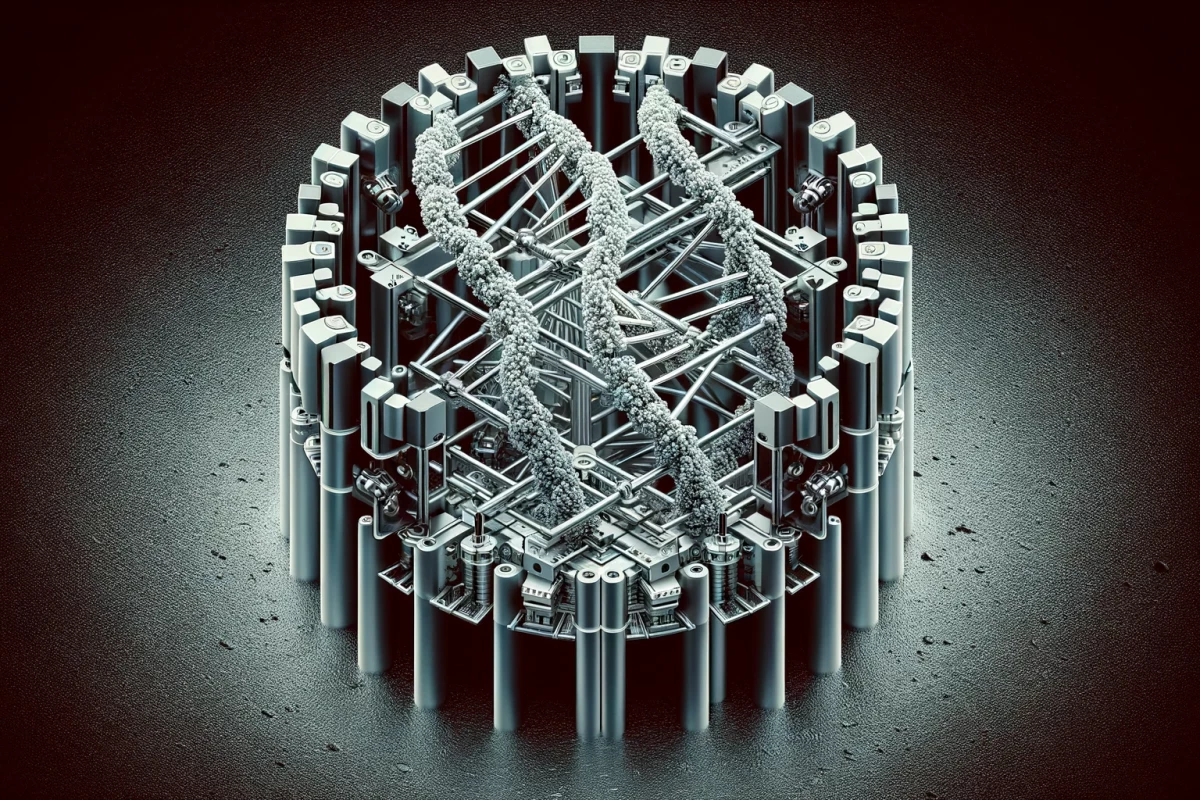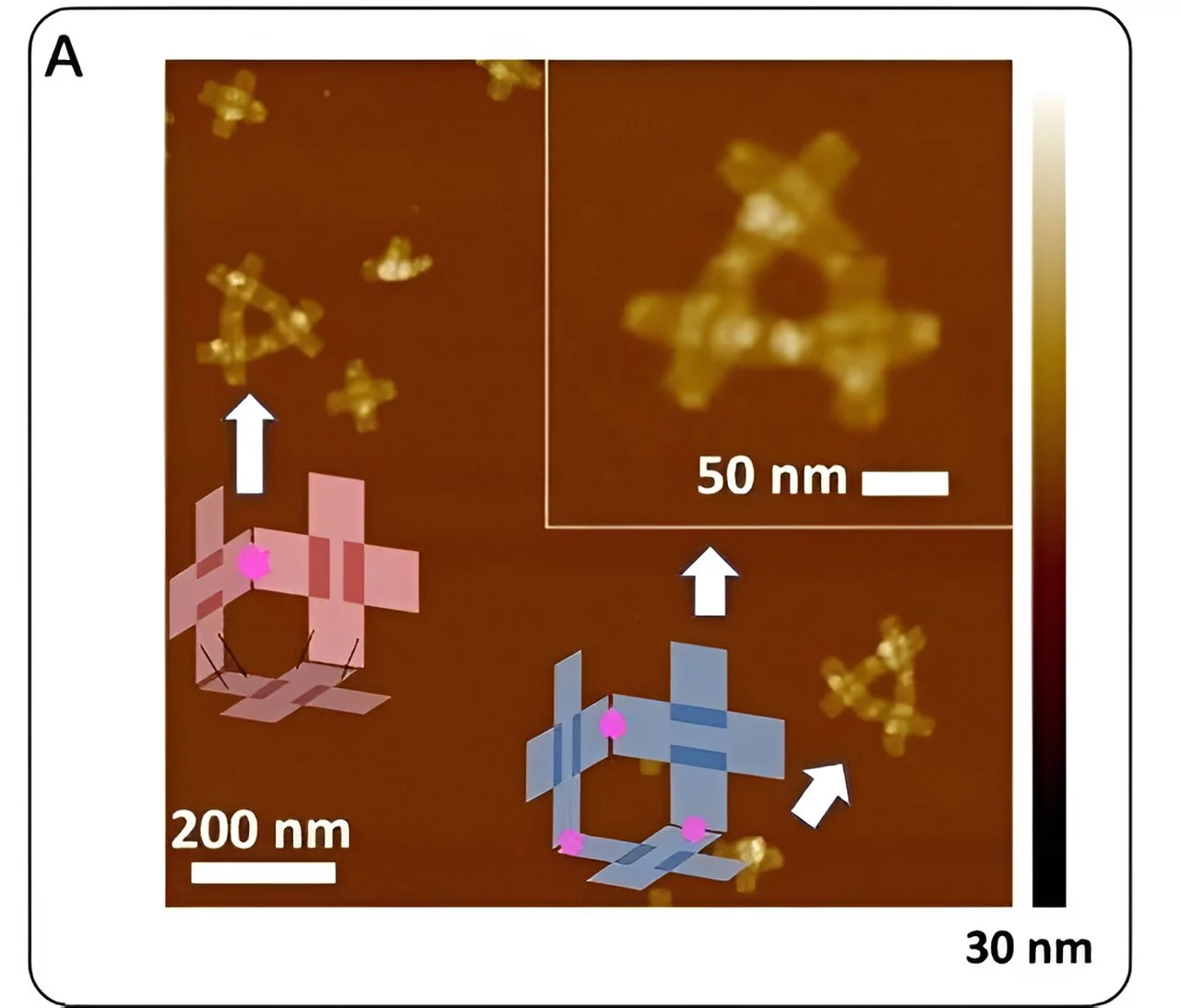Researchers have demonstrated a programmable nano-scale robot, made from a few strands of DNA, that's capable of grabbing other snippets of DNA, and positioning them together to manufacture new UV-welded nano-machines – including copies of itself.
The robots, according to New Scientist, are created using just four strands of DNA, and measure just 100 nanometers across, so about a thousand of them could squeeze up into a line the width of a human hair.
The team, from New York University, the Ningbo Cixi Institute of Biomechanical Engineering, and The Chinese Academy of Sciences, says the robots surpass previous efforts, which were only able to assemble pieces into two-dimensional shapes. The new bots are able to use "multiple-axis precise folding and positioning" to "access the third dimension and more degrees of freedom."
These nano-bots are often viewed as potential ways of manufacturing drugs, enzymes and other chemicals, potentially inside the cells of the body. But the researchers specifically call out the fact that these machines can "self-replicate its entire 3D structure and functions."

They're not entirely self-contained; the robots, while "programmable," act in response to externally controlled temperature and UV light, and they require that UV light to "weld" the pieces of DNA they're assembling together.
One other thing standing between humanity and the great Gray Goo apocalypse at this point is the fact that they can't make copies of themselves – or indeed, anything else – without adequate supplies of the precise snippets of DNA they need.
Still, it's pretty incredible stuff, and a glimpse into the possibilities that are rushing toward us at breakneck pace. Is this what living through the Singularity feels like?
Source: Science Robotics






